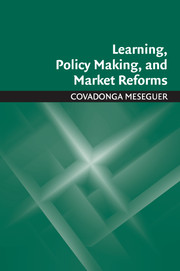5 - Learning and Capital Account Liberalization
Published online by Cambridge University Press: 18 January 2010
Summary
We begin our study of the origins of financial openness with a review of what is known about consequences because we expect that government officials are likely to have first contemplated the consequences before they liberalized or not international financial markets.
Quinn and Inclán (1997: 772)In recent decades, the internationalization of capital has been the hallmark of globalization. Starting in the late 1950s, the growth of the Euromarket boosted the opportunities for moving money across borders. The emergence of this mostly unregulated pool of capital paralleled, and is strongly related to, another important phenomenon: The increasing mobility of production and the rise of multinational corporations (MNCs) as crucial economic and political actors. With more and more opportunities to evade domestic controls, owners of capital and MNCs became empowered. Local politicians were bound to choose economic policies in accordance with capitalists' preferences to discourage capital and production from moving to more friendly environments. This is the famous “exit option” (Goodman and Pauly 1993).
The political consequences of this remarkable shift have been thoroughly discussed but continue to be controversial: In a context of the free movement of capital, can governments still pursue their preferred policies? The general answer, anticipated by Mundell and Fleming's model of open economy macroeconomics, is “no, they cannot.” According to the so-called impossible trilogy, in a context in which capital is allowed to flow freely across borders, governments have to choose between two objectives: Exchange rate stability and an autonomous monetary policy.
- Type
- Chapter
- Information
- Learning, Policy Making, and Market Reforms , pp. 142 - 180Publisher: Cambridge University PressPrint publication year: 2009



